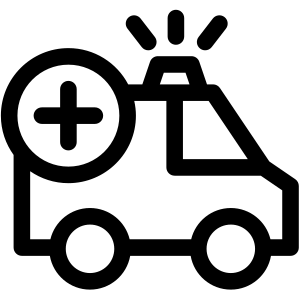Prescription Drugs and Canadian Health Insurance
By Krista DeKuyper | August 7, 2020 |

Prescription Drugs and Canadian Health Insurance Table of Contents
- Types of Health Insurance
- Prescription Drugs That Are Always Covered
- Prescription Drugs That May Be Covered
- Prescription Drugs That Are Never Covered
- DIN Numbers
- Contraceptive Drugs
- Fertility Drugs
- Smoking Cessation Aids
- Other Lifestyle Drugs
- About Generic Substitution
- Drug Coverage, Seniors and Provincial Health Plans
- Specialty Drug Coverage Programs
Introduction
This in-depth article examines prescription drugs and Canadian health insurance coverage and perspective. Drugs that are (and aren’t) covered are listed and we also discuss other aspects of coverage such as senior’s considerations and generic substitution.
Types of Health Insurance
There are two main types of Canadian health insurance: employee benefits (i.e. “group insurance”) and individual health insurance (i.e. “personal” health insurance). Prescription drug coverage differs slightly depending on the type of health insurance you have.
Generally speaking, drug coverage from employee benefits does not usually have maximums, while drug coverage with personal health insurance plans does tend to have maximums (usually for the calendar year and lifetime).
NOTE: there are some personal health insurance plans such as Flexcare from Manulife Financial that let you add a Catastrophic rider (option) that allows for unlimited prescription drugs.
Prescription Drugs Always Covered
To be eligible for coverage a prescription drug must:
- Be prescribed by a physician, dentist or psychiatrist.
- Be medically necessary.
- Have an associated DIN (Drug Identification Number). See below for more. Note: the exception to this rule may be medical marijuana (Sun Life announced in February, 2018, that it will be adding medical marijuana to its group benefits plans).
Note that not all drugs that meet these requirements are covered. The exclusions tend to be what are called “lifestyle” drugs such as smoking cessation aids, fertility, weight loss and contraceptive drugs.
Examples of common prescription drugs that are always covered by health insurance plans are:
- High blood pressure (hypertension) medications.
- Drugs used to control high cholesterol levels.
- Insulin for diabetics.
Prescription Drugs That May Be Covered
The following may be covered by health insurance (depends on the plan):
- New drugs that have just been approved for public use (i.e. just out of clinical trials).
- “Life style” drugs such as smoking cessation aids, contraceptive and fertility drugs (see below).
- Brand name drugs if there is an equivalent generic drug (see About Generic Substitution below).
- Medical marijuana is not (yet) covered by personal health insurance plans; however, there are some employee benefits plans that do offer some coverage for marijuana that is prescribed by a physician for pain management caused by MS, cancer, rheumatoid arthritis and other diseases. Click here for more.
Important: if you want a specific prescription drug covered and are considering a health insurance plan then please contact the insurance company (or better yet an experienced, licensed broker such as ourselves) to make sure that drug will be covered by the plan you are considering!
Prescription Drugs That Are Never Covered
The following drugs are never covered by private health insurance:
- Drugs that are not prescribed (e.g. over-the-counter drugs).
- Drugs administered in a hospital (these are covered by your provincial healthcare plan).
- Prescription drugs that do not have a DIN number.
DIN Numbers

A Drug Identification Number (e.g. DIN) is an eight-digit identification number assigned by Health Canada to all drugs sold in Canada, including prescription drugs.
A DIN provides information such as the drug manufacturer, the name of the drug, active ingredients, etc.
The DIN is always displayed somewhere within the drug container’s label. In addition, it should be listed on the receipt from the pharmacist (see image).
To find a prescription drug’s DIN number or vice versa please go the Canadian government’s Drug Product Database Online Query web page.
Contraceptive Drugs
A typical employee benefits plan usually covers oral contraceptive drugs.
Individual health insurance plans, however, vary when it comes to contraceptive drugs. Generally speaking, the cheaper, “bottom end” plans do not cover contraceptive drugs while the “deluxe” or “enhanced” plans do provide coverage for oral contraceptive drugs.
Currently no health insurance plans cover what are called “birth control patch” drugs.
The following are several individual health insurance plans that offer coverage for oral contraceptive drugs:
- Flexcare ComboPlus Enhanced plan from Manulife.
- Blue Vision Global health plan and Blue Vision Express health plan from Ontario Blue Cross.
- Personal Health Insurance (Enhanced) plan from Sun Life.
- FollowMe Premier conversion health plan from Manulife Financial.
Fertility Drugs
Fertility drug coverage is difficult to obtain, and the type of health insurance you have (group versus individual) makes no difference.
This includes guaranteed issue health insurance plans which do not cover fertility drugs at all.
The key here is that insurance companies regard infertility as a “pre-existing condition”. So, if you have discussed any infertility issues with your physician in the past then that is part of your medical history, which the insurance company has access to during the underwriting process.
Simply put, you can only get coverage for fertility drugs if you have never discussed infertility with your doctor!
Note: sometimes fertility treatments can be more expensive than the fertility drugs. Only fertility drugs are covered by health insurance, never the treatments.
Smoking Cessation Aids
Smoking cessation drugs are considered one of the “life style” drugs, and may be covered by an employee benefits plan.
If you have group insurance please contact your advisor at the insurance company to find out if smoking cessation aids are covered by your health plan.
Very few personal health insurance plans offer coverage for smoking cessation aids. However, the Personal Health Insurance (PHI) plan from Sun Life is one of those few plans that does cover smoking cessation aids.
Other Lifestyle Drugs
There are other life style drugs (besides those already mentioned above) that are covered by neither provincial healthcare plans nor by private health insurance plans. Examples are erectile dysfunction drugs such as Viagra and Cialis, and weight loss drugs.
About Generic Substitution
Many health insurance plans will not cover the costs of a proprietary, brand-name prescription drug if there is a generic, equivalent drug available. (Note that generic drugs are substantially cheaper compared to equivalent brand name prescription drugs.)
In fact, some health insurance plans go by the principle of “best cost equivalency”. With “best cost equivalency” the insurance company does not cover the brand name drug cost even if there is no generic equivalent drug available. The carrier decides what the generic drug might cost if it existed, and that is the drug cost that they cover.
Generic substitution is a common practice with personal health insurance plans, and is also becoming more common with employee benefits coverage as well.
It is interesting to note that there are two personal health insurance plans that offer coverage for brand name drugs and do not use “best cost equivalency” or “generic substitution”:
- Flexcare ComboPlus Enhanced plan (medically underwritten plan).
- FollowMe Premiere plan (guaranteed issue health plan).
Drug Coverage, Seniors and Provincial Health Plans
Provincial healthcare plans in Canada cover most prescription drug costs once a person becomes 65 years old (i.e. becomes a “senior”). As a result, senior citizens get most of their drug coverage from their provincial healthcare as opposed to their private health insurance plan. For example, in Ontario seniors are covered by the “Ontario Drug Benefit Program”. In Saskatchewan seniors are covered by the “Seniors’ Drug Plan”.
Note that dispensing fees and deductibles may not be covered by the senior’s provincial healthcare plan (depending on the province of residence). In these cases, a private health insurance plan should cover those additional costs.
For province-specific senior’s information please go the province’s web site. You can also use the Provincial Plans links at the bottom of this web page (each provincial summary has a link at the bottom to that province’s provincial healthcare web site).
Specialty Drug Coverage Programs
Each province in Canada has its own specialty prescription drug programs which tend to be for either senior citizens or low-income families.
Refer to the following for specialty provincial drug programs. Note that this is not a complete listing and is subject to change.
Alberta:
- Outpatient Cancer Drug Benefit Program: covers some medications used to treat cancer at no cost to patients.
- Specialized High Cost Drug Program: coverage for drugs used in highly specialized procedures like organ transplants and major heart surgery.
- Retina Anti-Vascular Endothelial Growth Factor Program for Intraocular Disease (RAPID): coverage for Avastin, Lucentis and Eylea, drugs that are used to slow down loss of vision.
- Insulin Pump Therapy Program: designed for Albertans who have Type I or Type III diabetes. Covers the cost of an insulin pump and associated supplies.
British Columbia:
- Fair Pharmacare Program: the largest of BC’s Pharmacare Programs, it helps to cover the costs of prescription drugs based on the recipient’s family income. Note that each specific drug has a maximum cost that will be covered by the province.
- Permanent Residents of Licensed Residential Care Facilities (Plan B): covers the costs of eligible medications and medical equipment (e.g. crutches, etc.).
- Recipients of B.C. Income Assistance (Plan C): covers prescription drug costs for BC residents that are on income assistance and receiving medical benefits.
- Cystic Fibrosis (Plan D): coverage for enzymes and other eligible products if suffering from cystic fibrosis and enrolled in a registered cystic fibrosis clinic in the province.
- Children in the At Home Program (Plan F): full coverage for prescription drugs required by severely handicapped children living at home.
- Smoking Cessation Program: covers prescribed smoking cessation drugs for BC smokers.
- Psychiatric Medications Plan (Plan G): covers the psychiatric drug costs of BC residents that are registered with a mental health services center and are also in financial need.
- BC Palliative Care Drug Plan (Plan P): covers 100% of the costs of eligible drugs for any resident who is in the end stages of a terminal illness and is receiving care at home (“home” can be also be with friends, family, hospice, etc.).
- First Nations Health Benefits (Plan W): coverage for prescription drugs, medical supplies and more that is funded via the First Nations Health Authority.
Manitoba:
- Pharmacare Program: partial coverage for high prescription drug costs for lower income families (based on family income and the current prescription drug costs). Note that there is a deductible, based on the family income.
Newfoundland:
- Newfoundland and Labrador Prescription Drug Program (NLPDP): partial or full coverage for eligible prescription medications. There are five sub-plans as follows:
- Foundation Plan: full coverage for eligible prescription drugs for residents in need, including those who are: receiving Income Assistance; children in the care of Regional Health Authorities, Youth Family Services or the Department of Children; residents with Youth Community Services; residents in either Long Term Care or Personal Care Homes; or people who are receiving some sort of community support.
- 65Plus Plan: drug coverage for senior residents aged 65 and up who are receiving Old Age Security Benefits (OAS) and Guaranteed Income Supplement (GIS). Note that this program also provides coverage for eligible ostomy supplies.
- The Assurance Plan: partial drug coverage for individuals and families whose drug costs exceed a given percentage of their income as follows:
- Costs exceeding 5% of net income if the family income is under $40,000 per year.
- Costs exceeding 7.5% of net income if the family income is from $40,000 to $74,999 per year.
- Costs exceeding 10% of net income if the family income is from $75,000 to $149,999 per year.
- Access Plan: coverage for individuals or families with low incomes as follows:
- Families with kids (this includes single parents), with net yearly income of $42,870 or less/
- Couples with no children who have a net annual income of $30,009 or less.
- Individuals (e.g. no spouse or children) with a net yearly income of $27,151 or less.
- Select Needs Plan: eligible drug coverage for residents with either Cystic Fibrosis or Growth Hormone Deficiency.
New Brunswick:
- New Brunswick Prescription Drug Program (NBPDP): provides partial or full coverage of prescription drug costs if a member of the following groups: seniors, nursing home residents, adults in Special Care Homes, social development clients, children in the care of the Ministry of Social Development and special needs children, multiple sclerosis patients, organ transplant patients, residents with growth hormone deficiencies and residents with HIV/AIDS.
- New Brunswick Drug Plan: note that this IS NOT a “specialty” drug program that covers drug costs for various residents. This program is available to all residents, and there are copayments and premiums which are based off of gross income levels.
- New Brunswick Drugs for Rare Diseases Plan: provides financial assistance for drug costs that are related to specific diseases and conditions.
Nova Scotia:
- Seniors’ Pharmacare Program: partially covers prescription drug costs for Nova Scotians 65 years or older who are not eligible for any other financial assistance.
- Drug Assistance for Cancer Patients: provides partial coverage for some cancer related drugs for low-income Nova Scotian residents with no other drug coverage.
- Palliative Care Drug Program: covers the full cost of drugs related to palliative care at home.
- Family Pharmacare Program: this is NOT a specialty drug program that provides full drug coverage for various individuals with a given set of circumstances. All Nova Scotians are eligible for this program, and there are premiums that are dependent on the size of the resident’s family and income.
- Department of Community Services Pharmacare Benefits: provides prescription drug coverage to Nova Scotia residents who are: receiving Income Assistance, or; are enrolled in the Disability Support Program, or; are Low Income Pharmacare for Children recipients; or are children in the care of child welfare agencies (Children’s Aid Society, Family and Children’s Services or Department of Community Services).
- Insulin Pump Program: coverage for insulin pumps and pump-related medical supplies for diabetics 25 or younger. Others may also qualify (based on family size and income).
Northwest Territories:
- Extended Health Benefits for Seniors Program: full coverage for prescription drug and dental costs for non-native and Metis residents who are 60 years of age or older. This program also has coverage for vision care, medical supplies, travel expenses and more.
- Extended Health Benefits for Specified Disease Conditions: prescription drug coverage (and more) for non-Native and Métis residents who have a specific disease or condition (e.g. Alzheimer’s Disease, Cystic fibrosis, cancer, cirrhosis of the liver, multiple sclerosis, alcoholism and more.
- Métis Health Benefits: provides coverage for prescription drugs, dental care, vision care, medical equipment (and more) to eligible Metis residents (i.e. registered as a Metis and a permanent resident participating in the NWT Health Care Plan).
Nunavut:
- EHB Full Coverage Plan: the Extended Health Benefits Full Coverage Plan for Chronic Health Conditions provides full coverage for eligible prescription drugs for Nunavut residents with a chronic disease/illness. Also offers coverage for durable medical equipment and travel costs.
- Non-Insured Health Benefits Program: this program (funded by Health Canada’s First Nations and Inuit Health Branch) offers coverage for prescription drugs, travel expenses, medical supplies, visioncare, dental costs and more. Persons eligible for the NIHB program are Inuks, natives who are registered according to the Indian Act, and any infant under 1 year old who has an eligible parent.
Ontario:
- UPDATE: as of April 1, 2019, OHIP+ will be the second payer for Ontario residents under the age of 25 via the OHIP+ program IF the Ontario resident has private health insurance coverage (in which case the private health plan is the fiurst payer). OHIP+ will still be the primary payer for those residents who do not have private health insurance coverage. For more see Learn About OHIP+
- Ontario Drug Benefit (ODB) Program: covers most of the cost of eligible prescription drugs for Ontario: seniors (65+ years old); residents of a long-term care home or “special care” home; residents enrolled in the Home Care, Ontario Works, Ontario Disability Support or Trillium Drug programs; or residents who are eligible for OHIP+ coverage. The amount the resident pays out depends on marital status and income.
- Trillium Drug Plan: offers full prescription drug cost coverage to people whose prescription drug costs are high compared to their family household income (e.g. 3% or more of net income being spent on prescription drug costs).
- Special Drugs Program (SDP): covers the full cost of some outpatient drugs used to treat several specific medical conditions such as cystic fibrosis, Gaucher’s disease, thalassaemia and more.
- New Drug Funding Program for Cancer Care: coverage for specific, new cancer drugs that are administered intravenously in a hospital. This program is run by Cancer Care of Ontario.
- Inherited Metabolic Diseases (IMD) Program: full coverage for the cost of eligible outpatient drugs and various supplements (including food) that are used to treat metabolic disorders.
- Respiratory Syncytial Virus (RSV) Program for High-Risk Infants: full coverage for “palivizumab”, a drug that prevents lower respiratory tract infections (caused by the RSV virus) in high risk infants under the age of two at the start of the RSV season.
- Visudyne Program: full coverage for “verteporfin”, a drug used to slow down the progression of macular degeneration that is related to aging. Note that verteporfin is the generic equivalent of “Visudyne”.
Prince Edward Island:
- Financial Assistance Drug Program: covers the full cost of approved medications for PEI residents receiving social assistance.
- Seniors’ Drug Program: covers most of the cost of eligible prescription drug costs for PEI residents that are 65 years old or more.
- Generic Drug Program: partial drug coverage for eligible residents under the age of 65 who do not have private drug insurance. Does not cover diabetic drugs or any narcotics. The cost to enrolled residents for an eligible generic drug is limited to a maximum of $19.95.
- Diabetes Drug Program: partial coverage for eligible diabetic drugs and medical supplies such as urine-testing materials, blood strips, oral medications, etc.
- There are well over 20 specialty drug programs offered by the province of PEI (see below for the rest of the provincial programs). For the full listing of all available drug programs please click here.
- AIDS/HIV Drug Program
- Catastrophic Drug Program
- Children in Care Drug Program
- Community Mental Health Drug Program
- Cystic Fibrosis Drug Program
- Erythropoietin Drug Program
- Family Health Benefit Drug Program
- Growth Hormone Drug Program
- Hepatitis Drug Program
- High Cost Drug Program
- Home Oxygen Program
- Immunization Program
- Institutional Pharmacy Program
- Insulin Pump Program
- Meningitis Drug Program
- Nursing Home Drug Program
- Nutrition Services Program
- Ostomy Supplies Program
- Phenylketonuria (PKU) Supplement Program
- Quit Smoking Drug Program
- Rabies Vaccine Program
- Sexually Transmitted Disease Drug Program
- Transplant Anti-Rejection Drug Program
- Tuberculosis Drug Program
Saskatchewan:
- Emergency Assistance for Prescription Drugs: full coverage ONE TIME ONLY for eligible prescription drug costs that cannot be paid for by the Saskatchewan resident.
- Seniors’ Drug Plan: covers most of the eligible prescription drug costs for Saskatchewan residents who are 65 years old or more (there is a maximum cost of $25).
- Children’s Drug Plan: families with eligible children (ages 14 and under automatically qualify) only pay a maximum of $25 per filled prescription.
- Insulin Pump Program: partial coverage for insulin pumps for residents 25 years old or less in order to manage their diabetes (Type 1).
- Palliative Care Drug Coverage: covers the cost of required drugs for palliative care residents who are in late stages of their terminal illness.
- Saskatchewan Drug Plan: this is not a specialty program. It is a provincial drug program that helps to lower the cost of prescriptions for its residents.
- High Drug Cost Program: .
Yukon:
- Pharmacare: covers the total cost of the lowest priced generic equivalent prescription drug for seniors if that drug is eligible (e.g. listed in the Yukon Pharmacare Formulary). To be eligible you must be at least 65 years old, or be 60 years old and married to a Yukon resident who is 65 or over
Conclusion
We hope you have found this article helpful regarding prescription drug coverage, private health insurance and provincial healthcare plans. If you have anything you would like to add feel free to leave a comment below!































